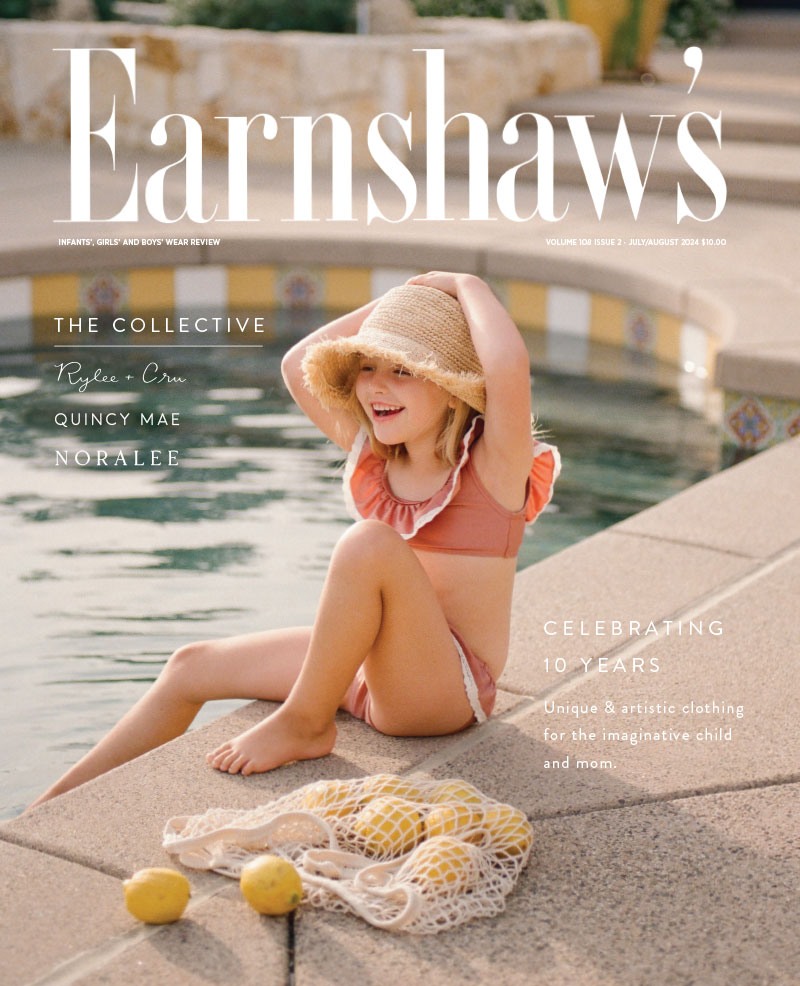 It was encouraging to walk the opening day of the recent Pitti Immagine Bimbo show in Florence, Italy, and see the aisles packed! And it wasn’t just window shoppers. Buyers were sitting seat to seat in booth after booth, actively writing orders. Was I transported back in time to the go-go ’90s? (Many of the fashions did have a grunge-meets-hip-hop vibe.) Might it be an economic tailwind? (Perhaps, but the volatility associated with any such forecast is nothing to hang your hat on.) Has the consolidation of retail reached a level where “put pen to paper” people are the sole survivors? Were Fall ’19 collections just that good? Could the improvement stem from the Pitti Bimbo organizers’ efforts to draw traffic in the weeks leading up to the show, enticing buyers with a line-up of fashion shows, Barbie’s 60th anniversary celebration and seminars?
It was encouraging to walk the opening day of the recent Pitti Immagine Bimbo show in Florence, Italy, and see the aisles packed! And it wasn’t just window shoppers. Buyers were sitting seat to seat in booth after booth, actively writing orders. Was I transported back in time to the go-go ’90s? (Many of the fashions did have a grunge-meets-hip-hop vibe.) Might it be an economic tailwind? (Perhaps, but the volatility associated with any such forecast is nothing to hang your hat on.) Has the consolidation of retail reached a level where “put pen to paper” people are the sole survivors? Were Fall ’19 collections just that good? Could the improvement stem from the Pitti Bimbo organizers’ efforts to draw traffic in the weeks leading up to the show, enticing buyers with a line-up of fashion shows, Barbie’s 60th anniversary celebration and seminars?
The answer is likely a combination of all the above. Every show needs a mix of good fortune, momentum and attractions to succeed. Above all, a show’s success depends on exhibitors delivering the goods. Fortunately, Pitti Bimbo delivered. The Fall ’19 collections on display were as broad as they were diverse, and as enticing as they were inspiring. Dolce & Gabbana’s jacquard and heraldic prints for babies and organza, chiffon and poplin dresses for girls showcased in an enchanted forest setting of giant mushrooms and stuffed toy rabbits were fashion fairy tales come true. Lorenzo Serafini’s collection of edgier children’s knitwear, sweatshirt mini-dresses, Lurex and zebra stripes had ’90s street fashions on total recall. Meanwhile, Paolo Pecora took a different route, whisking customers to the Alps with snowboarding motifs, large pockets and patterns from cross-country ski jerseys. Cursive embroidery, graffiti screen-prints, hearts, hedgehogs and peace signs motifs were other popular themes found throughout the show. It was a cornucopia of color, cuts and curated assortments.
While the too-cute factor played strong as always, many designers upped the ante to incorporate meaningful messages into their collections. Timely and sensitive issues like mental health, self-esteem, sustainability, love and friendship were woven into wearable designs. The messaging was clear but not too heavy. (This is still childrenswear, after all.) Italian fashion label Stella Jean’s collection, for example, is an ode to multiculturalism, including masculine fabrics combined with tribal patterns and waves reminiscent of Japanese prints. Marcelo Burlon presented a line of sweatshirts and T-shirts featuring all-over prints paired with endangered wild animals in collaboration with the World Wildlife Fund. A portion of sales will support the environmental organization. Scandinavian brand Molo’s collection featured an “it’s okay to be different” theme. Examples included “different together” tracksuits with macro sports graphics that say “good spirit,” and striking interstellar designs with the banner “Children of the Universe.” CEO Mogens Jepsen, the subject of this issue’s Q&A (p. 8), believes touching on larger societal issues is important, especially in today’s increasingly divided political landscape. As a parent of three children, the exec believes it’s his duty to try and make the world a better place. As an entrepreneur who launched his business in a makeshift office in his tiny bedroom 16 years ago, it’s not in his blood to sit back and wait for someone else to do it. The company, known for its quirky streetwear aesthetic in baby to age 16. Distribution spans hundreds of leading accounts worldwide and includes 11 company-owned concept stores and a staff of more than 130 employees. Not bad for a two-person startup working out of a tiny apartment bedroom. The story of Molo’s rise to prominence—driven by a dream, hard work and determination—is inspiring. It can be done.
Entrepreneurs like Jepsen are behind so many success stories in our wonderful industry. They’re people who decided to just do it. They blend grit, talent, innovation, resilience, timing and, perhaps most of all, passion into a recipe for success. Jil Garcia, president of Malibu Sugar and writer of “A Note to My Younger Self” (p. 12), started her tween brand in her living room. Divorced with two toddlers to raise on her own at age 34, Garcia picked up the pieces and got to work. It was part-time jobs to make ends meet at first, but after making a monogrammed T-shirt for her daughter and, soon after, for the neighborhood kids, the seeds of what would become Malibu Sugar take root. Garcia’s entrepreneurial road to success was bumpy and included a few detours. But she persevered. More importantly, she fulfilled her greatest goal of all: setting an example for her children.
Entrepreneurs at various stages of their journeys lined the aisles of Pitti Bimbo just like other childrenswear shows around the world. Whether they’re newbies in startup mode (a few samples on display in a pipe-and-drape booth) or old pros in booths that look like a tricked-out showrooms, resilience is in their DNA. They continue to dream—one collection, conversation and order at a time. While the road to success may be long, winding and bumpy, they persevere, oftentimes against what seem like insurmountable odds. In doing so they set a fine example for us all to follow our dreams. In the immortal words of Christopher Robin: “You’re braver than you believe, stronger than you seem and smarter than you think.”



Leave a Comment: